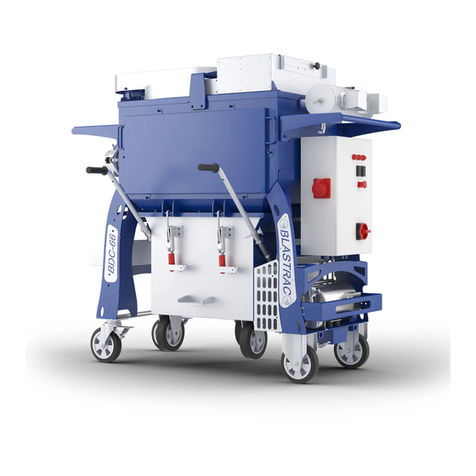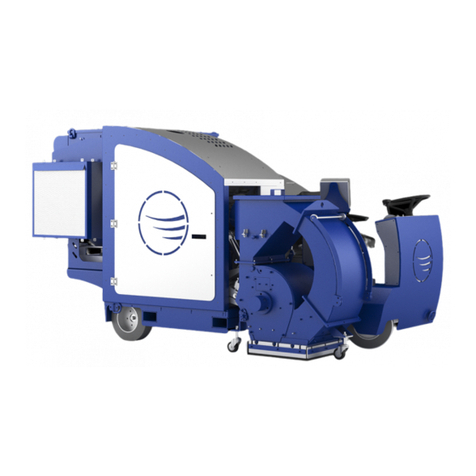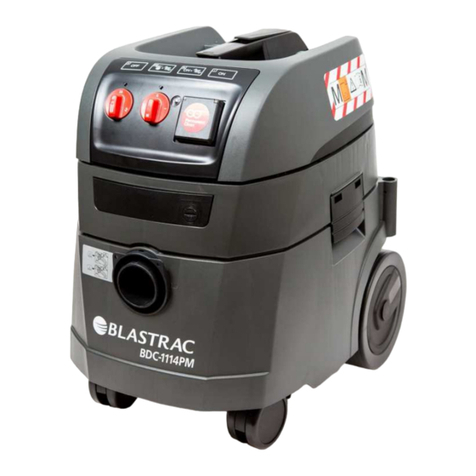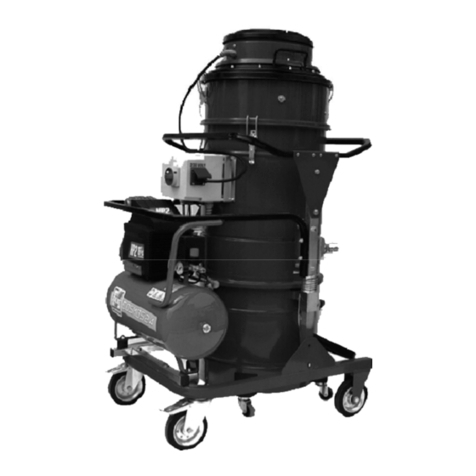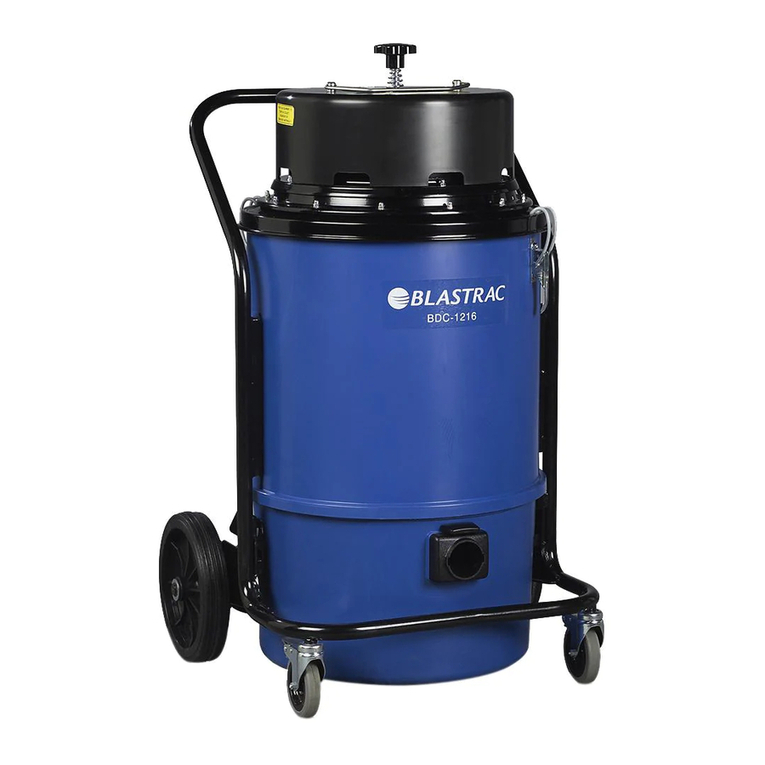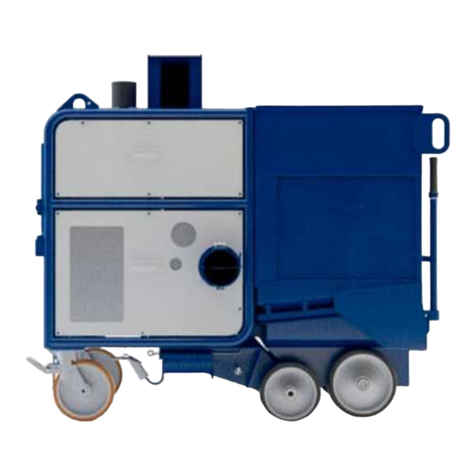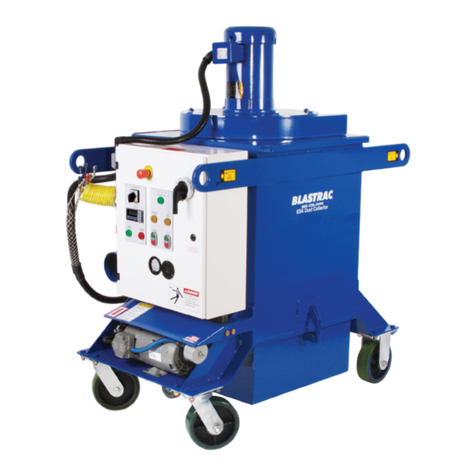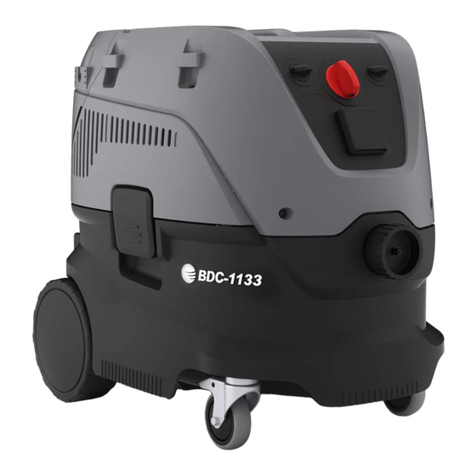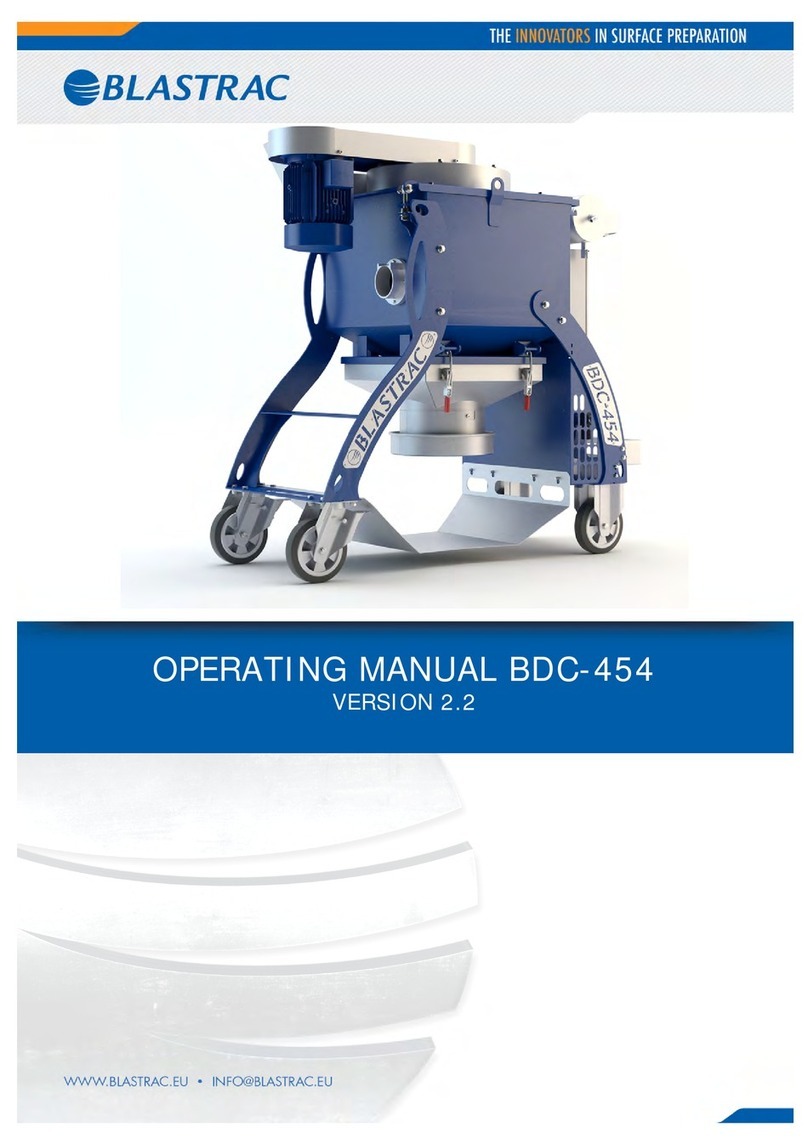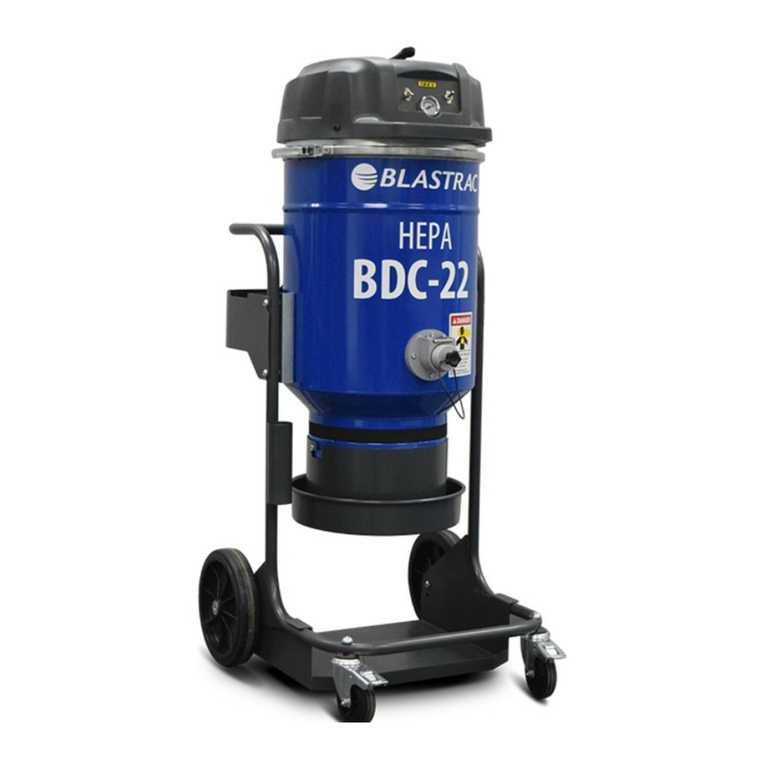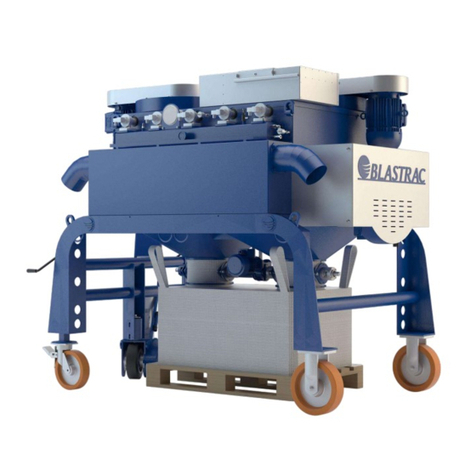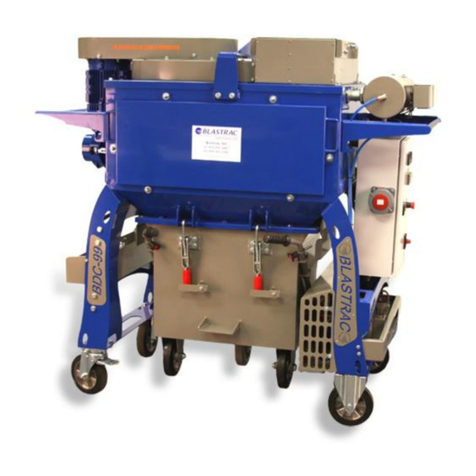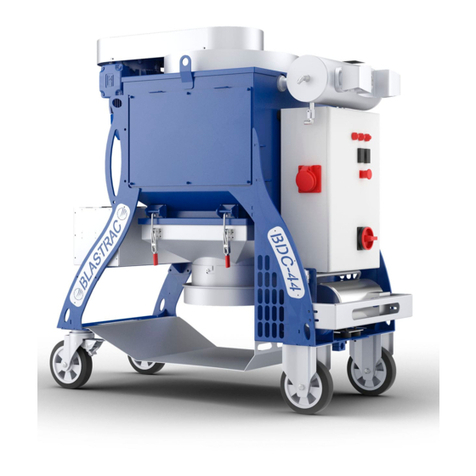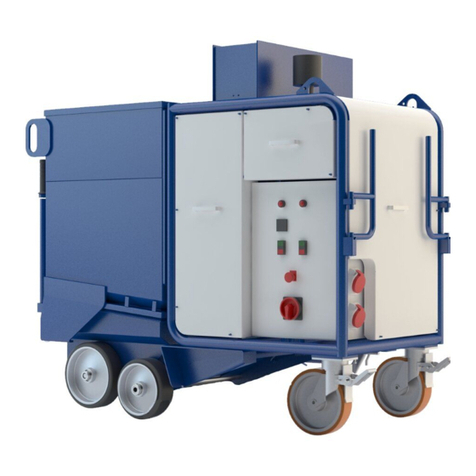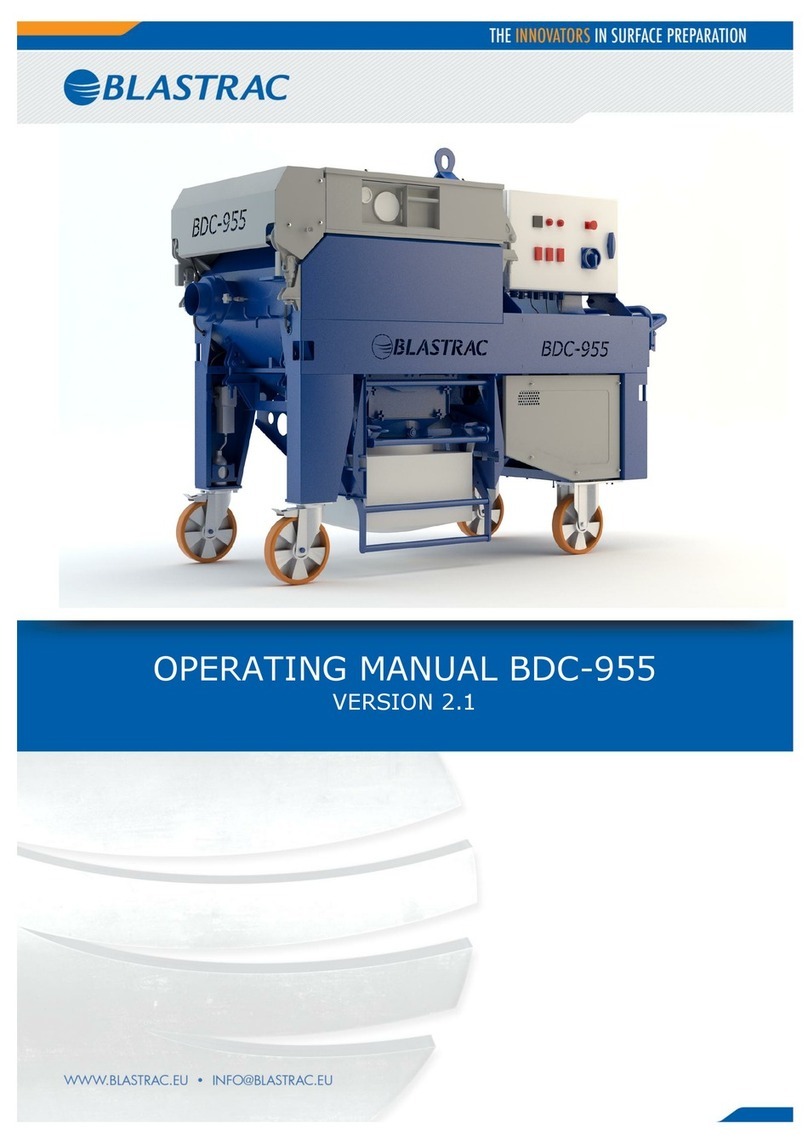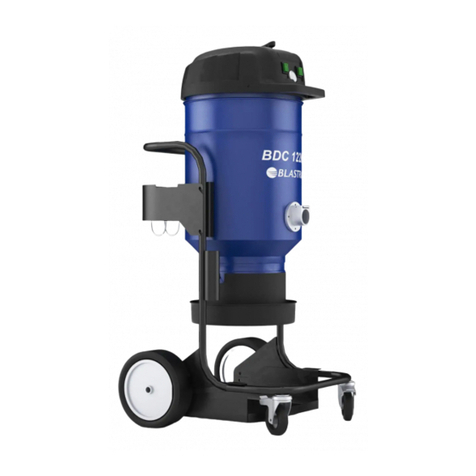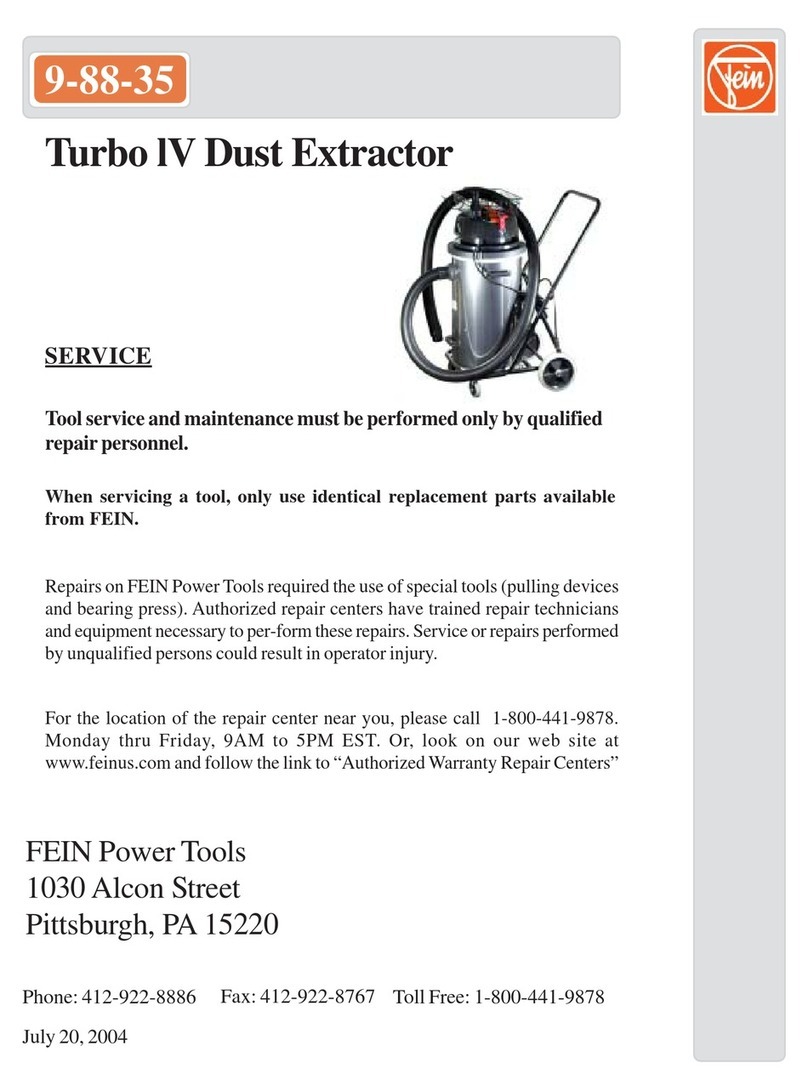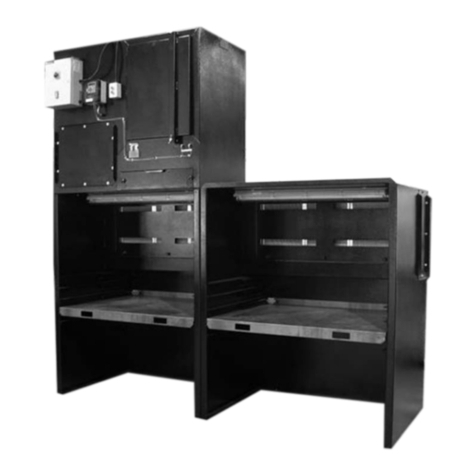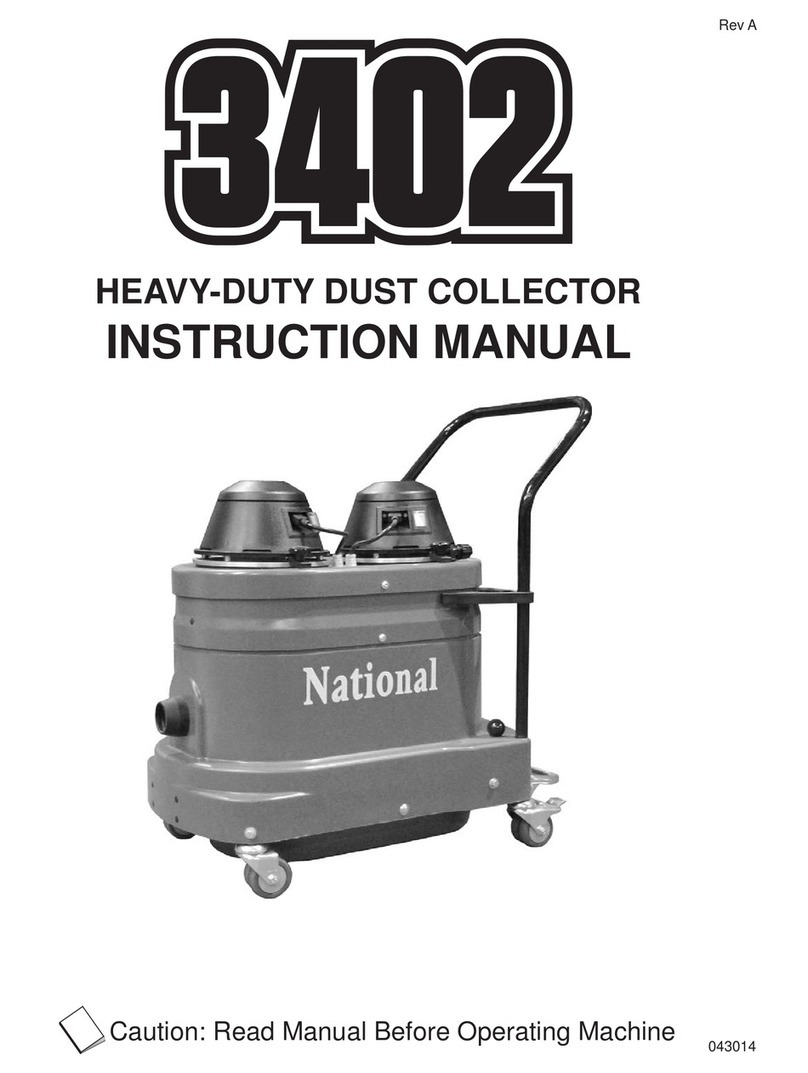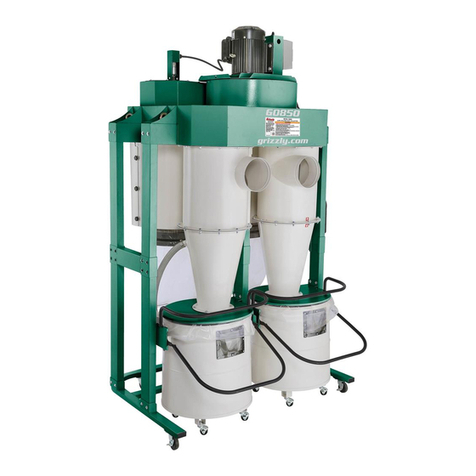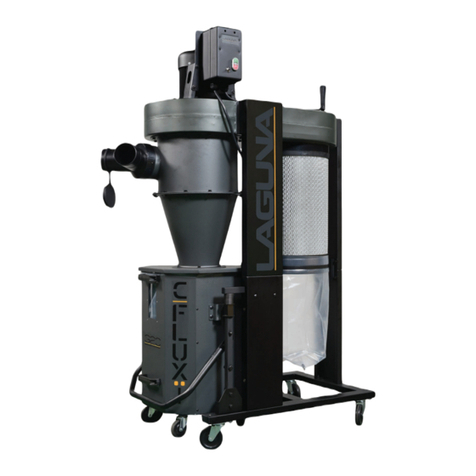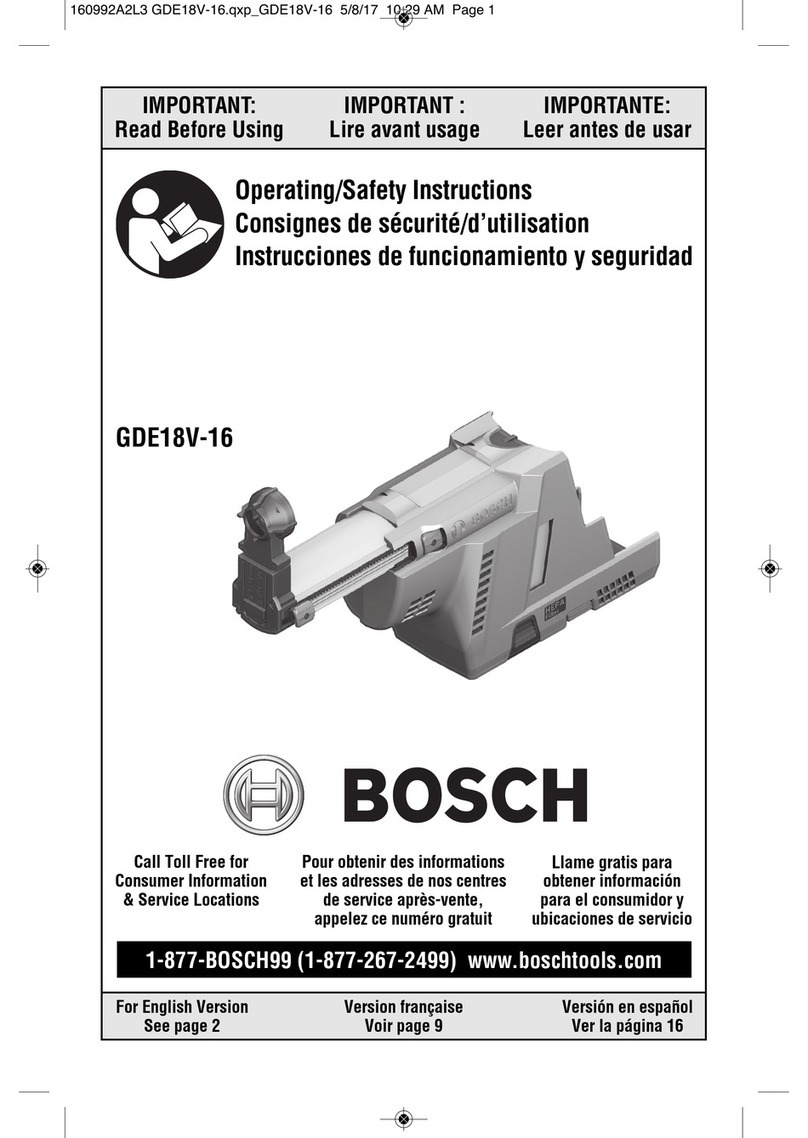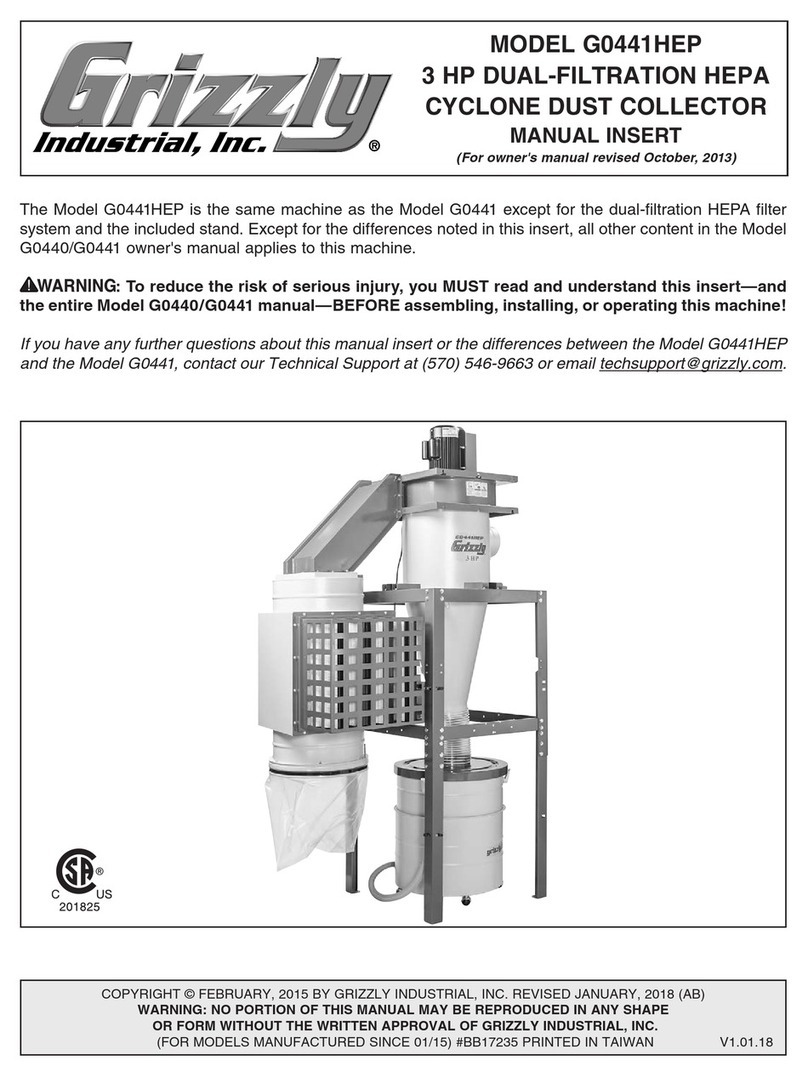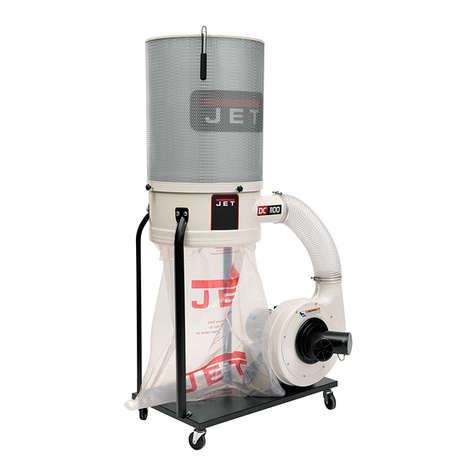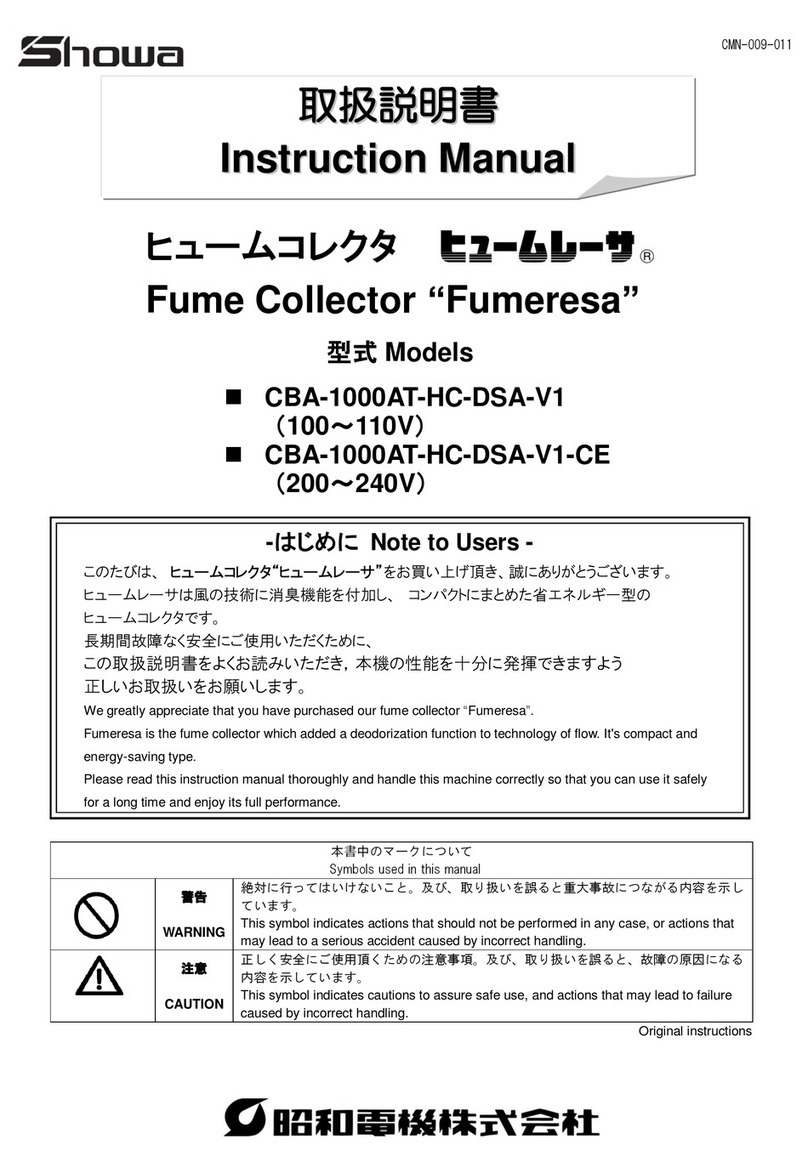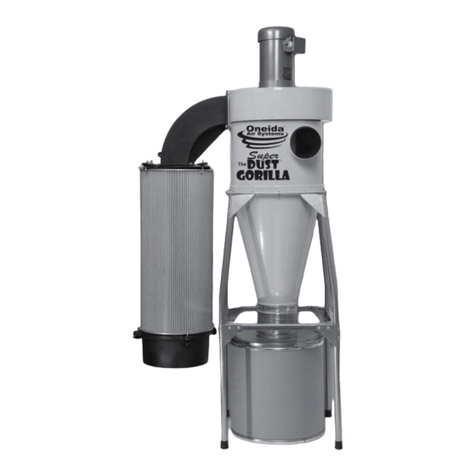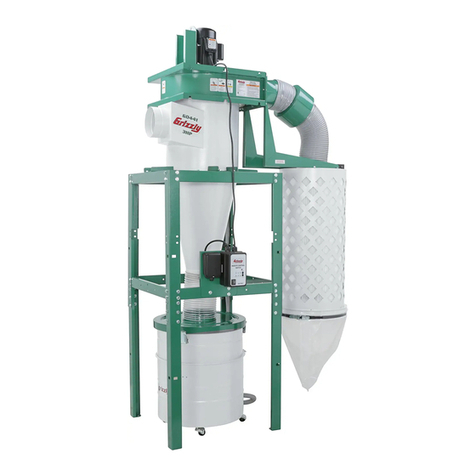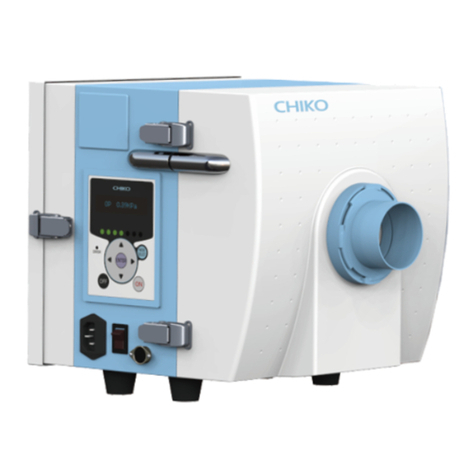8
3.5 Dust collector safety
a) The Blastrac dust collector can only be used for dry cleaning.
b) It should only be used for removing noncombustible/non-explosive dust or substances.
c) The machine may not be used for pathogenic or carcinogenic or asbestos substances without
additional safety measures should be used. Always mind the local safety requirements. Contact your
dealer for additional options.
d) Do not use the machine in the presence of dangerous atmospheres like flammable gasses or dusts.
e) The machine is designed for usage in conditions according to classification M.
f) The dust hose must be undamaged and free of obstructions. It must be connected properly with hose
clamps and industrial tape.
g) Do not point hose at people or animals.
h) Never use this machine for sucking water or liquids.
i) Acids, acetone or solvents can damage the machine.
j) Never use the machine without the filters in place!
k) Never use the machine without a big bag/dustbin attached.
l) Regularly check the contents of the dust-bin / bigbag. Always wear a dust mask of at least class FFP3
when emptying the dust bin / changing the bigbag. Comply with the local waste treatment regulations
considering the removed material.
m) Regularly use the air pistol and drain valve to remove water from the pressure tank.
n) When temporarily interrupting the work (1/2 hour –1 hour), turn off the fan unit only. Pulse cleaning of
the filter system will continue and will increase the life-time of the filter cartridges.
o) During a longer stand still of the dust collector, first switch off the fan unit. Let the pulse cleaning cycle
run for +/- 5 minutes. Switch off the compressor and Main-switch. Remove water from the air tank.
p) Always close off the inlet of the dust collector when running the pulse cleaning cycle! Failure to do so
results in blown out dust, which can be hazardous to the health!
q) Close the sliding cover of the silencer when the machine is turned off. This prevents moisture, dust and
other contaminants to enter the machine.
r) If dust leaves the filter unit instead of clean air, this is a sign that the filter cartridges are damaged or not
fixed correctly inside the chamber. Do not proceed! Rectify immediately!
s) When a filter is leaking it has to be replaced. The compartment above the filters and silencer also have to
be cleaned thoroughly.
t) Compartments that are not dust-tight must be opened with suitable tools and thoroughly cleaned.
u) Operators should observe all safety regulations appropriate to the materials being handled.
v) Make sure the machine is parked on a flat and horizontal surface before operation.
w) The machine must be braked by actuating the levers on the wheels with brakes.
x) Do not allow the operation of the machine while it is moving, during operation the machine must be
braked.
3.6 Maintenance safety
a) Pull out the power plug and place it in sight, before starting inspections and repairing on the machine.
b) Wait for standstill of all drives before any inspections, adjustments and/or maintenance work is started.
c) Block machine in stable position before doing any maintenance work.
d) Use the drain valve to depressurize the air pressure tank before maintenance.
e) WARNING! Do not weld, flame cut or perform grinding works on or near the dust collector. Danger of fire
or explosion exists!
f) To allow the user to carry out maintenance operations, the dust collector must be disassembled, cleaned
and inspected as far as reasonably possible, without causing hazards for the maintenance staff or other
people.
g) The suitable precautions include: decontamination before disassembling the dust collector, adequate
filtered ventilation of the exhaust air from the room in which it is disassembled, cleaning of the
maintenance area and suitable personal protection equipment.
h) When maintenance or repair procedures are carried out, all the contaminated elements that cannot be
properly cleaned, must be destroyed.
i) These elements must be disposed of in sealed bags according to the applicable regulations and in
accordance with the local laws governing the disposal of such material.
j) This procedure must also be followed when the filters have to be disposed.
k) Use only original Blastrac filters and spare parts.
l) It is advisable to stock all spare parts or wear parts that cannot be supplied quickly. As a rule, production
standstill periods are more expensive than the cost for the corresponding spare part.
m) Failures due to inadequate or incorrect maintenance may generate very high repair costs and long
standstill periods of the machine. Regular maintenance therefore is imperative.
n) Operational safety and service life of the machine depends, among other things, on proper maintenance.
